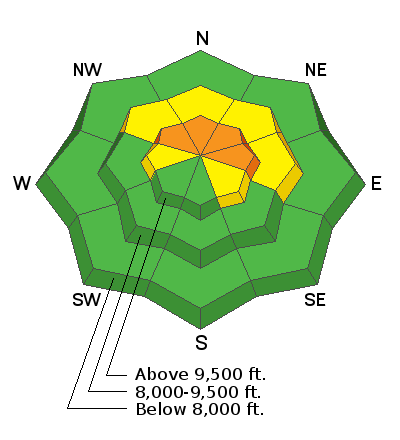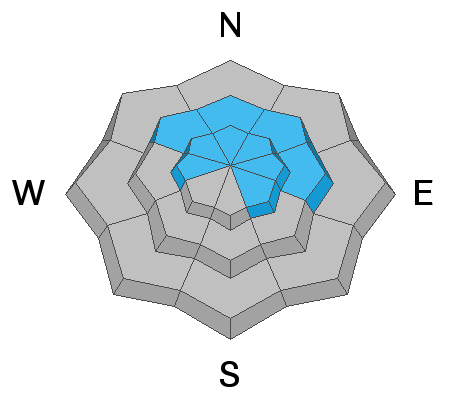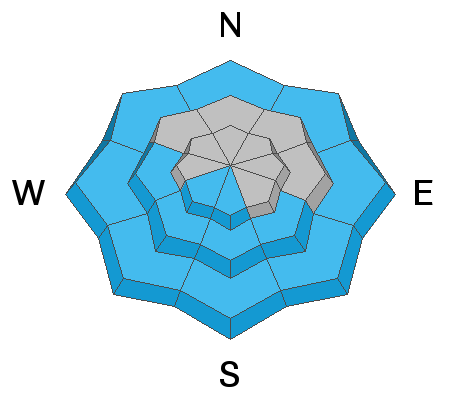Forecast for the Provo Area Mountains

Issued by Evelyn Lees on
Saturday morning, December 8, 2018
Saturday morning, December 8, 2018
The avalanche danger is CONSIDERABLE on upper elevation slopes facing northwest through easterly, where a slide could break 2 to 4 feet deep, failing near the ground on weak, sugary facets. On these same shady, mid elevation slopes and upper elevation westerly and southeasterly facing slopes, the avalanche danger is MODERATE. Here, the likelihood of triggering a slide is less, though it would still break near the ground.
In Utah, we can live and die by aspect, use a compass to precisely nail down the direction a slope faces.

Low
Moderate
Considerable
High
Extreme
Learn how to read the forecast here









